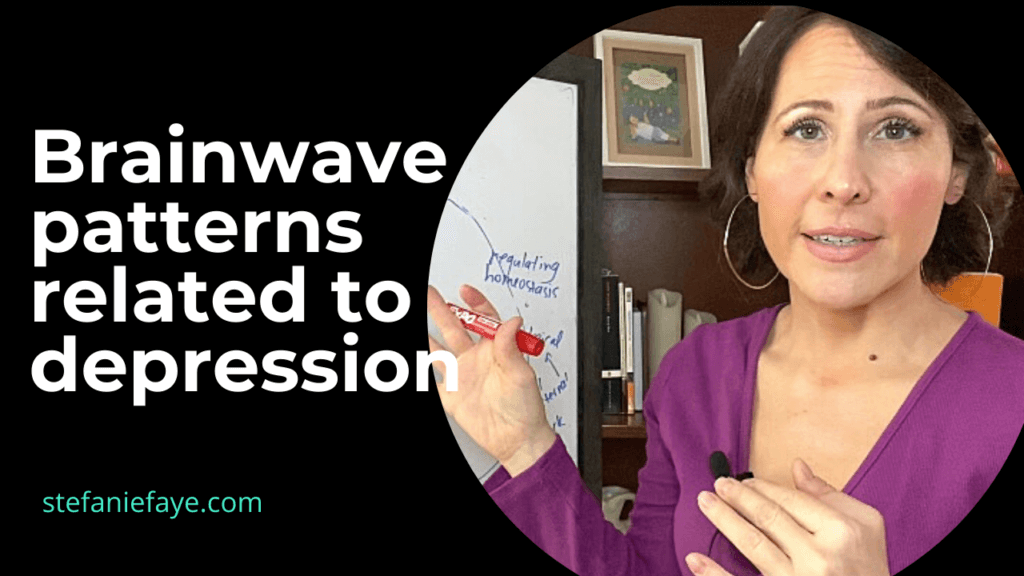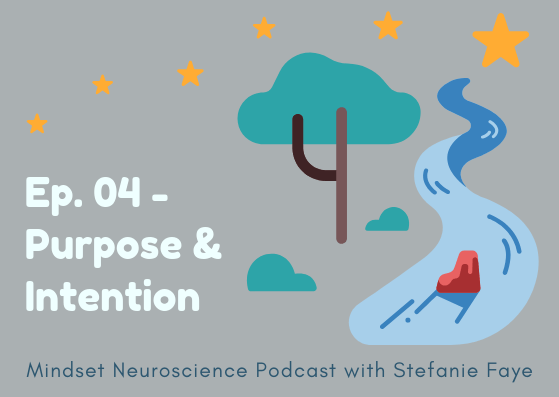
There are certain patterns i see in brainwave profiles (that are obtained through quantitative EEG analysis) that are often linked with people who report challenges such as depression and anxiety
One of those patterns is asymmetry.
What this means is that there is a certain range of frequencies that seem to be dominant on one side of the brain compared with the other. In people with high anxiety, there can be the higher frequency range known as hibeta. In people who report symptoms of depression, this asymmetry tends to be linked with slower frequencies - most often alpha and theta, as well as delta
(I go into the alpha brainwave in this video and will cover hibeta and theta in upcoming videos).
What i’ve observed over the years in people who are experiencing symptoms of depression is a ‘flatness’ or lack of expression. I see lower levels of facial gestures, slower body movement, a slightly slouched posture, and often monotonous or flatness of voice. What people tell me is that they ‘don’t care about anything’, they have no energy, they’ve lost interest in things.
I also notice that many of the people who are reporting depression (and have brainwave profiles that correlate with it) have challenges in various relationships - whether family, romantic or friends. They feel unfulfilled, empty and disconnected from the people in their life. They have an inability to get in touch with that ‘spark’ that they report feeling before.
What I have also noticed is that not only are they disconnected from that electric, visceral feeling that comes from positive emotions, but they also have lost touch with anger. Their experience is dominated by a feeling of resignation, lethargy and emptiness.
What’s interesting about all this is that through years of looking at data, listening to people, going through my own depression, and synthesizing different domains of research - I see a very strong connection with something particular about human behavior and these experiences of depression, anxiety, post-traumatic stress.
This behavior is what I call signal suppression. Suppression can also be described as subduing. And it can be ‘other-induced’ or ‘self-induced’. This is a topic I explore more deeply in podcast episode 9 and a video I’ll post right before that (in a few weeks).
For today (and in this video), I’m focusing on three key things before we go into the deeper layers of signal flow and signal suppression:
- Asymmetry and lateralization: high levels of asymmetry in brainwave patterns can often be associated with social-emotional-psychological issues
- The brain lateralizes: this means that certain tasks or functions may be more specialized in one hemisphere than the other (no area of the brain works in isolation, so it’s not a matter of ‘the left controls this and the right controls that’.. but for certain functions, we do see a certain degree of lateralization). For example, we can see some specialization within areas of the left hemisphere for certain aspects of language, and regulation of emotion and modulation of internal state in response to feedback in the right hemisphere).
- The vagus nerve system is asymmetrical: the left and right sides carry out different tasks. The main area of the vagal system I talk about in this video is the Nucleus Ambiguus. What’s interesting about the NA is its connection to the pharynx and larynx as well as its role in regulating facial expression and emotion (more on that in a future article).
The connection I’m making here is*: one of the most important features of the human social nervous system is its ability to express our internal experiences outward. When we do this and we have safe conditions to do this, we are creating a feedback system that allows us to more accurately and completely understand ourselves. When we don’t express ourselves vocally and through our facial expressions - this may be due to experiences from our past that included some form of signal suppression from someone else. Those past experiences may be leading us to self-suppress in our current situations. This suppression, avoiding and side-stepping of what we really want to say doesn't’ align with the most adaptive features of our human social nervous system.
So to help us self-regulate and ‘feel better’... what I have observed over and over again… is to allow ourselves to feel what we are feeling (not avoid or distract) and then to find some way to express it in a psychologically safe situation. This can be through journaling, safe conversations, art… anything that allows us to use our hands, body, vocal cords and face to transduce what we are feeling internally into frequencies that can be detected by others.
Is there a situation you’re in right now where there is something you really want to say and you either aren’t clear about what that is, OR.. you know what is but you keep avoiding, suppressing or distracting yourself from expressing it?
More to come on this topic in the upcoming videos!
*this connecting of asymmetrical activity and expressing emotions is my personal theory - this is not based on established research, so if citing this please do not portray it as peer-reviewed research! Thanks!
References:
Busch et al., "Language and Trauma: An Introduction", Applied Linguistics, (2020): 323-333
Frewen et al., "Clinical and Neural Correlates of Alexithymia in Posttraumatic Stress Disorder", Journal of Abnormal Psychology, 117 (2008), 171-181.
Porges, S. "Orienting in a defensive world: mammalian modifications of our evolutionary heritage. A Polyvagal Theory", Psychophysiology, 32 (1995), 301-318.




